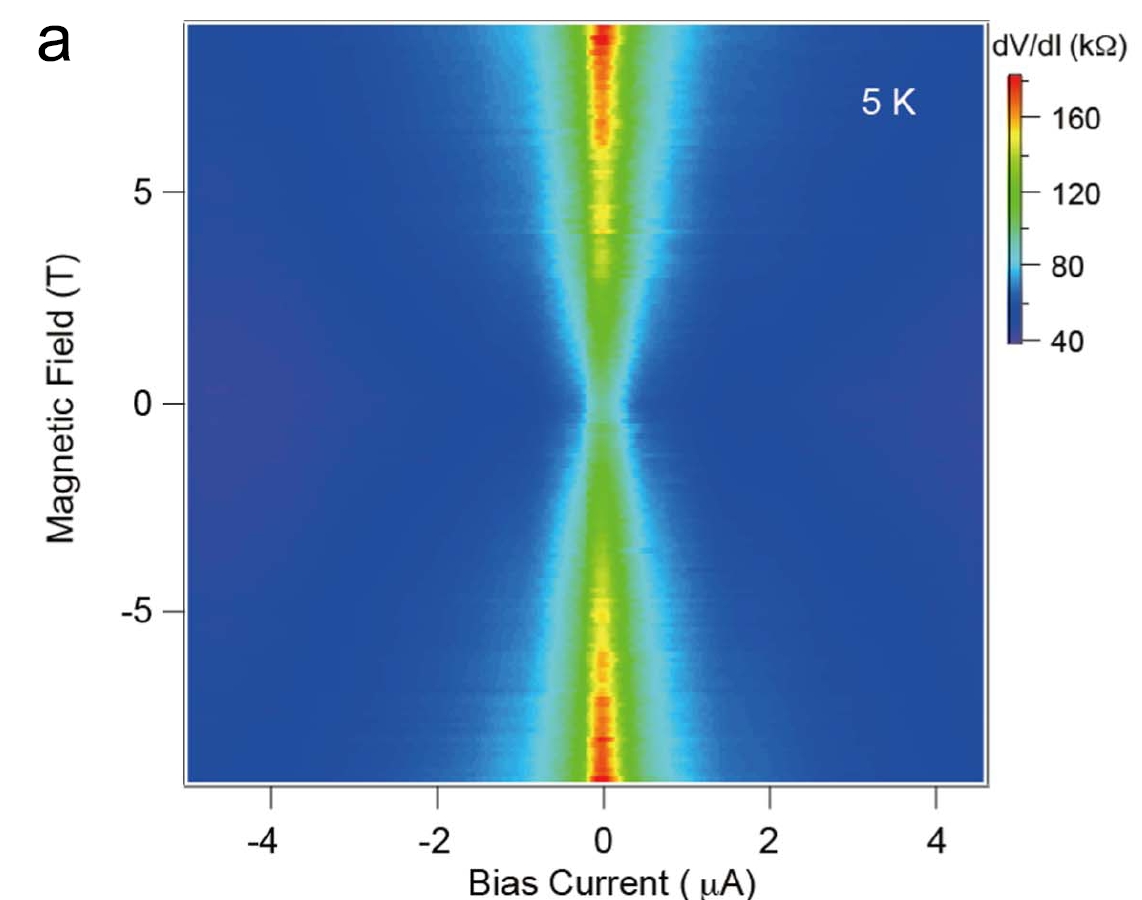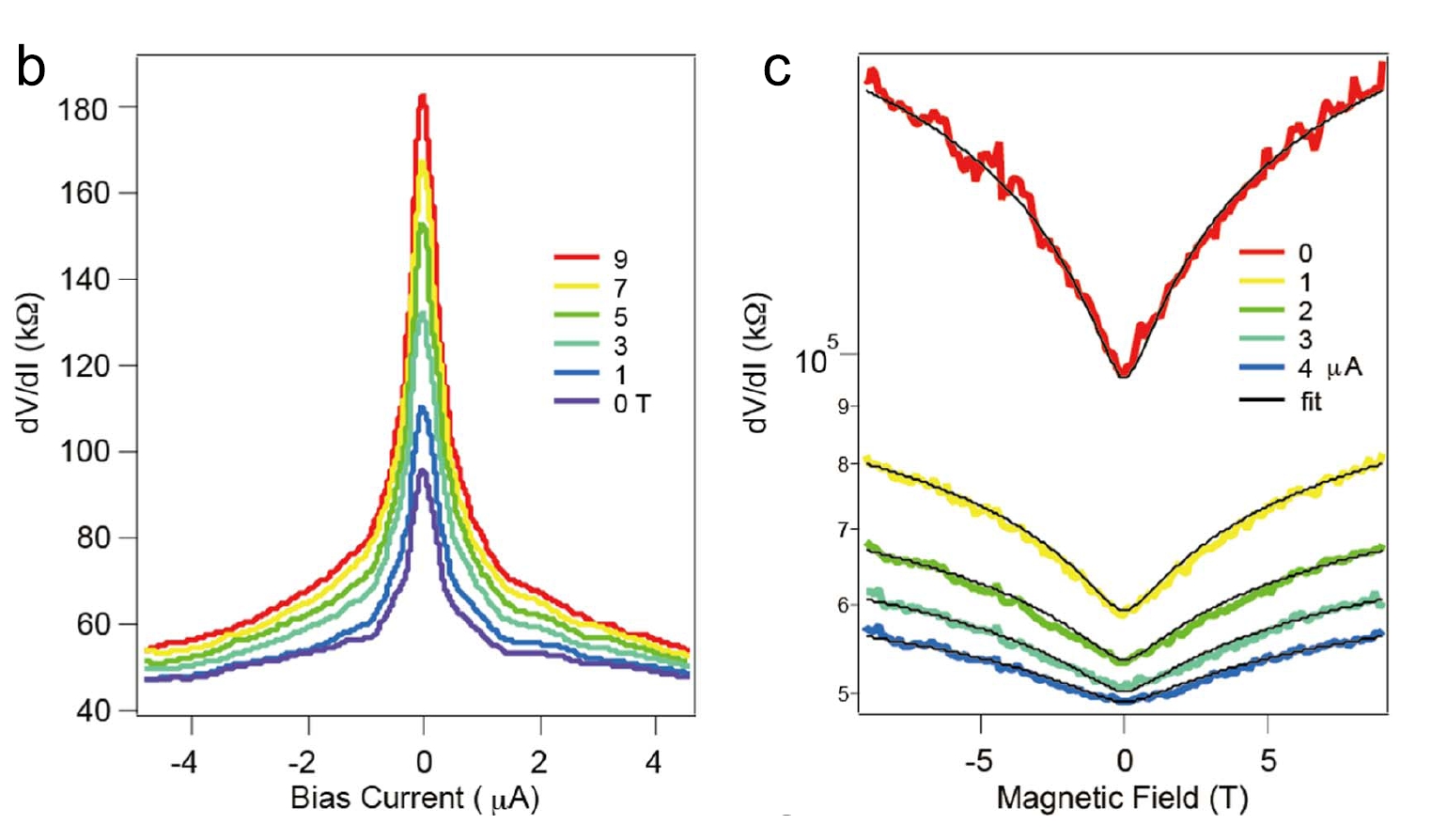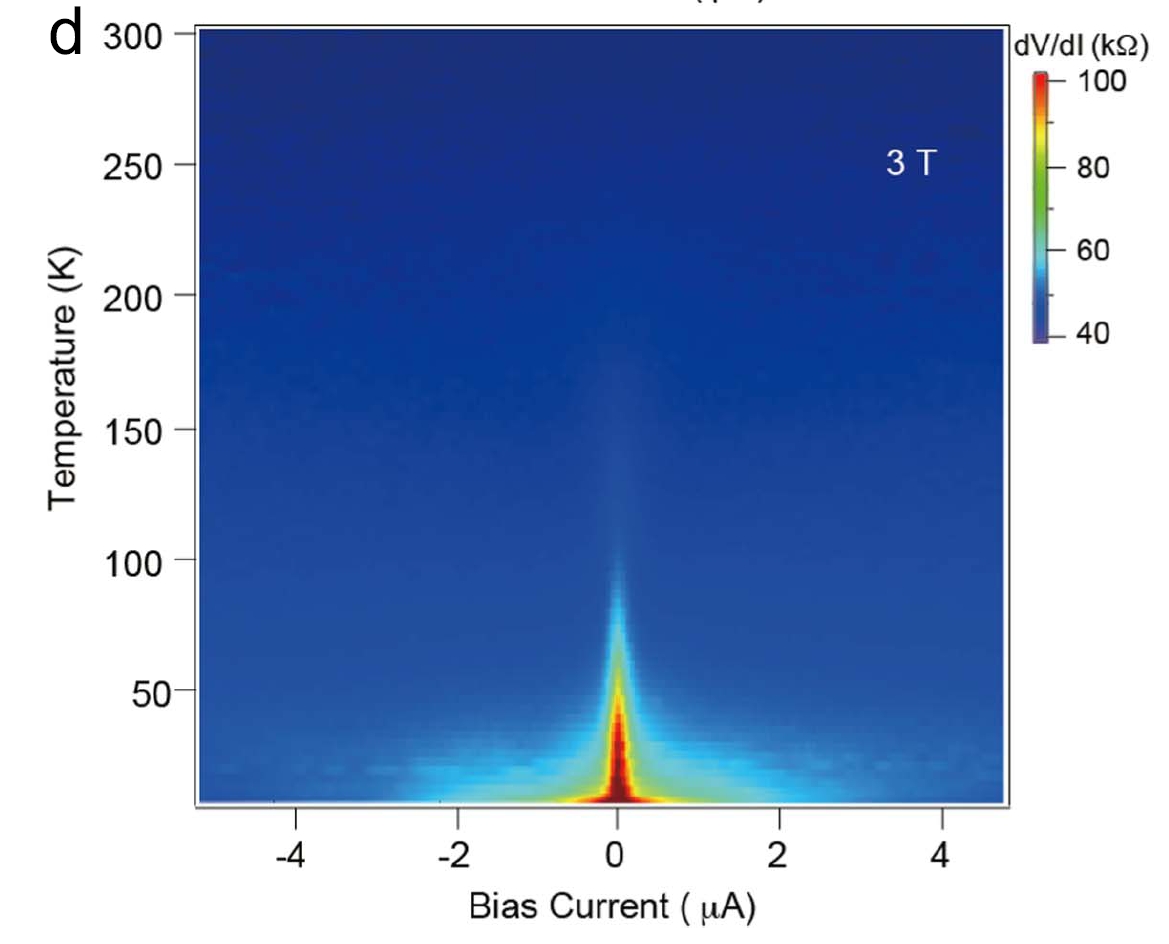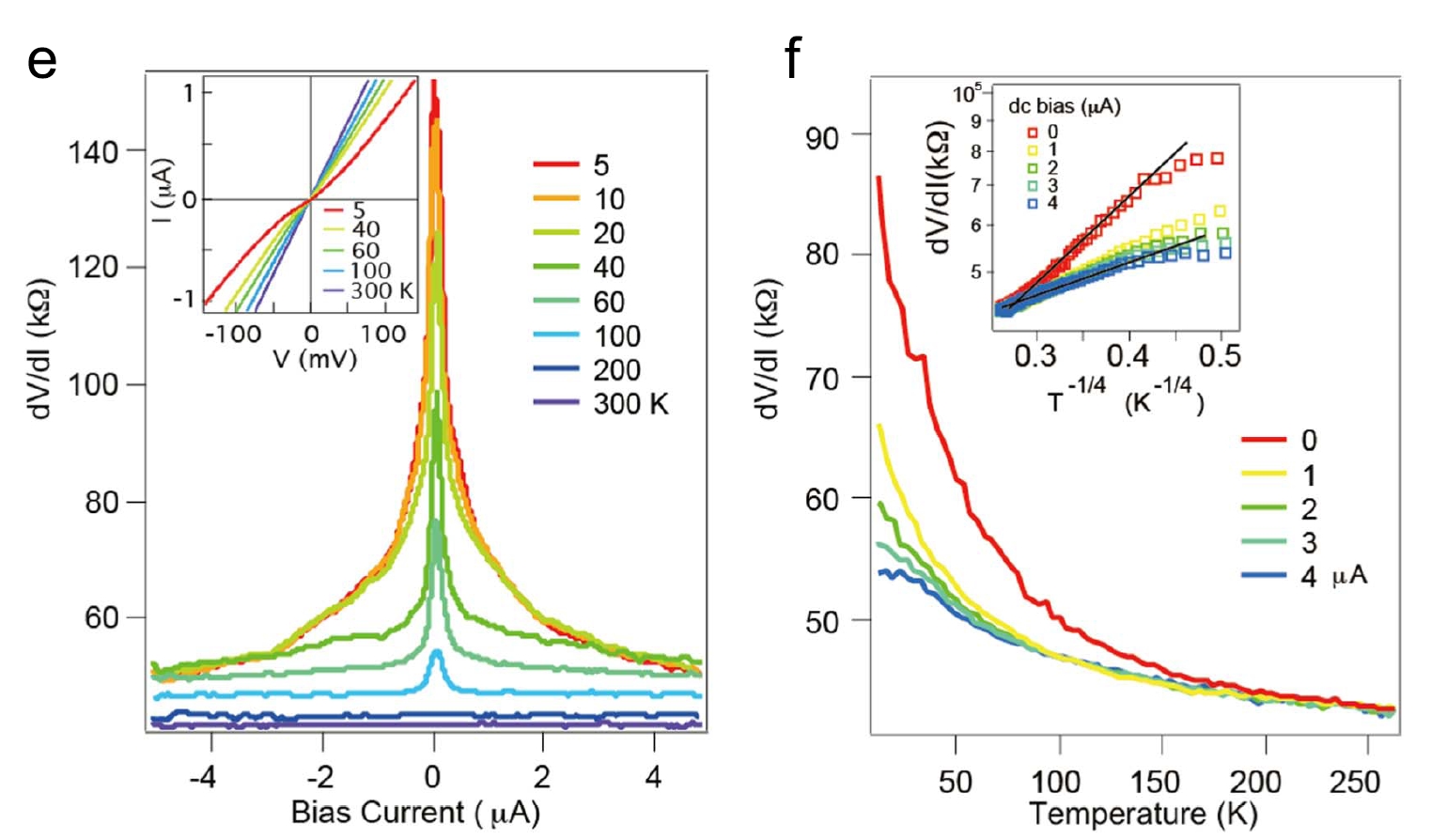
Effect of aging-induced disorder on the quantum transport properties of few-layer WTe2 |
|
Recently, the emerging physical phenomena found in transition metal dicalcogenides (TMDCs) have triggered vast investigations. Among them, nano-electronics in WTe2 devices have attracted particular attentions due to its exotic band structure. However, the thickness dependence of its quantum transport properties in the two-dimensional limit remains under debate. Here, we show systematic performance of low temperature quantum electronic transport of atomically thin WTe2. It is observed that aging induced localized electronic states explain the low temperature Coulomb gap in transport measurements, leading to the anomalous magneto-transport which appears to be extrinsic. While few-layered WTe2 showed clear metallic tendency in the fresh state, degraded devices first exhibited a re-entrant insulating behavior, and finally entered a fully insulating state. Correspondingly, a crossover from parabolic to linear magneto-resistance, and, upon further aging, leads to the observation of weak anti-localization. Our study, published in 2D Materials (4, 011011, 2017) reveals for the first time the correlation between the unusual magneto-transport and disorder in few-layered WTe2.
Fig. (a) Differential resistance measured as a function of bias current and magnetic field at T=5K, with its line cuts along fixed magnetic field and bias current shown in (b) and (c), respectively. Solid lines in (c) are fitted. (d) Differential resistance measured as a function of bias current and temperature at 3T magnetic fields, with its line cuts along fixed temperature and bias current shown in (e) and (f), respectively. Inset in (e) shows reconstructed IV characteristics by integrating the dV/dI curves in (e). Inset in (f) shows a semi-log plot of dV/dI against T-1/4. Linear dependence can be seen at high temperature ranges. .
|
|



